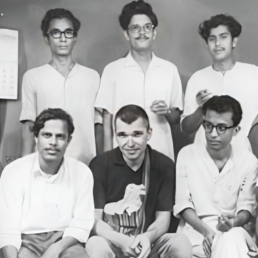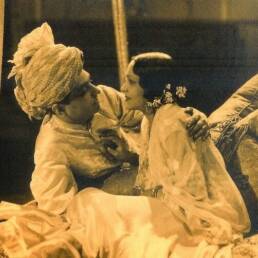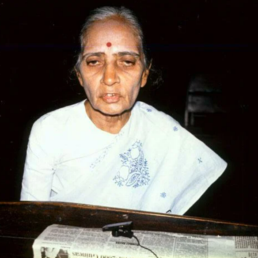When the protagonist of a film destroyed his career by eloping with the heroine who also happened to be the producer’s wife, it led to the emergence of the first genuine superstar of Hindi cinema.
Bombay Talkies, set up in 1934, was a pioneer of the Bombay film industry. Himanshu Rai and Devika Rani, a Bengali couple, were the principals of the studio, along with Niranjan Pal and German director Franz Osten.
Jawani ki Hawa, a thriller shot entirely on a train, was Bombay Talkies’ debut production. Rai was looking for a new lead actor when he met Najmul Hassan, a dashing and debonair man who was believed to be the scion of an aristocratic family from Lucknow.
Rai persuaded Hasan, a law school dropout, to pursue a career in films. He signed a multi-movie deal the first of which was Jawani ki Hawa. Little did Rai know that Devika Rani and Najmul Hasan would fall in love during the filming.
Jawani ki Hawa released in 1935. Himanshu Rai proceeded to start his next film, Jeevan Naiya, with the same pair. A significant chunk of the film had already been shot when disaster struck. Devika Rani and Najmul Hasan vanished one fine day.
It was a huge personal and professional blow for Himanshu Rai. As the studio owner became distraught, Sasadhar Mukherjee, a senior official in the technical department having a close relationship with Devika Rani, stepped in.
Mukherjee was eventually tracked down the truant couple at Calcutta’s Grand Hotel. He managed to persuade Devika Rani to end the relationship and return to base. Rani returned to Bombay.
Himanshu Rai however was in no mood to forgive the man who had betrayed him so spectacularly. Najmul Hasan was fired. Jeevan Naiya was now to be reshot from the scratch. And Rai needed a new lead actor.
Sasadhar Mukherjee had previously arranged for his brother in law Kumudlal Ganguly to work as a lab technician at Bombay Talkies. He now persuaded his boss to give Kumudlal an acting break. Franz Osten, the director, was strongly against it.
He felt Kumudlal looked too ordinary for silver screen hero. Himanshu Rai though was adamant. Although Kumudlal was reluctant to face the camera, Sasadhar Mukherjee persuaded him too. He would have to adopt a screen name though.
In 1936,“Ashok Kumar” debuted opposite Devika Rani in Jeevan Naiya in 1936. Released the same year, Achhut Kanya, starring the same pair, became a raging sensation and cemented Ashok Kumar’s position as a star – a storied career that would last nearly six decades.
Meanwhile, the man he had replaced was left to pick up the pieces. Najmul Hasan joined BN Sircar’s New Theaters in Calcutta – a place which had in its ranks iconic names like Pankaj Mullick, Kanan Devi, Prithviraj Kapoor, KL Saigal & Pahari Sanyal among others.
Because he was not good at singing, Hasan ended up playing 2nd fiddle to stars like Kapoor and Saigal. He featured in Nartaki, a 16th century musical released in 1940 that was one of the biggest hits of the year.
It did not do much for Hasan’s career though. His last film in India was Meenakshi (1942). During partition, Najmul Hasan moved to Pakistan where he sporadically worked in movies without much acclaim.
One rare commercial success was the Punjabi film Heer Ranjha (1970) where he played the role of Heer’s father. Eventually Najmul Hasan passed away in 1980 in relative obscurity.
It is perhaps best to leave the last word to the peerless Manto. In his unique style, the great wordsmith described Hasan’s fate thus: “He was left to join the ranks of those who are fated to be deserted by their beloveds for less emotional, but weightier political, religious or simply material considerations.”
Sources:
Image Attribute:
- Wikimedia Commons




